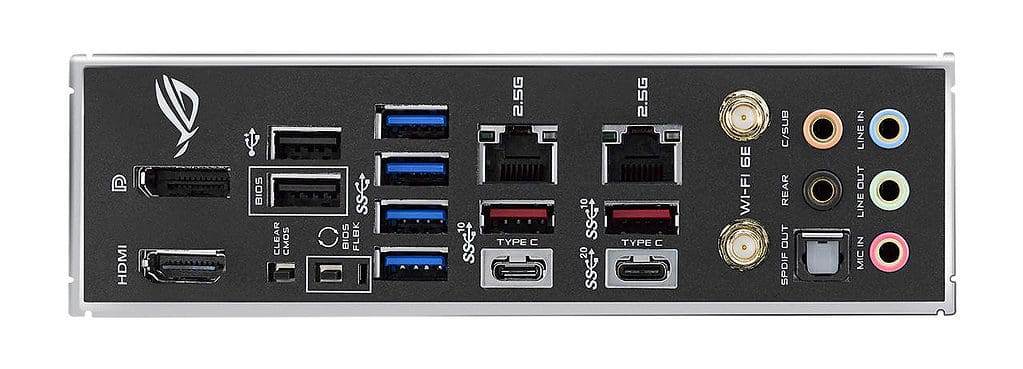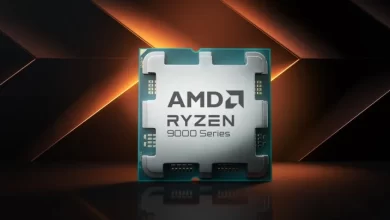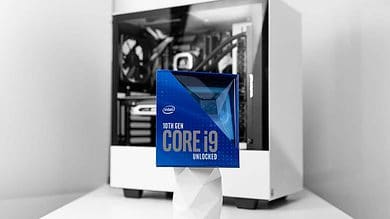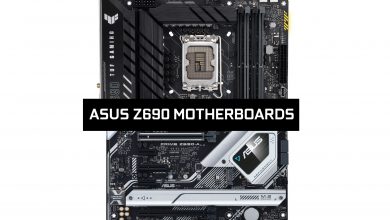Intel Z590 Chipset, PCIe 4.0 kinda!
Intel Z590 Chipset offers 4 new upgrades
There are 4 main new features which differentiate the Z590 chipset from its predecessor, the Z490 chipset:
1 The CPU-to-chipset link, which has been doubled from a DMI x4 link to a DMI x8 link. This means an effective CPU-to-chipset bandwidth of a PCIe 3.0 x8 link (8 GB/s), and suggests that two PCIe 3.0 x4 drives can be attached and run at full speed. Out of all the 500-series chipsets, it is safe to think that the Z590 is the only one that will do this, with all others forcing an x4 link. Also, the x8 link only works with Rocket Lake CPUs, and will downgrade to x4 with a previous generation processor.
2 The Z590 chipset natively supports the PCIe 4.0 standard (a first for Intel).
Here is the catch: the Chipset doesn’t seem to provide PCIe 4.0 lanes, but instead 24 PCIe 3.0 Lanes. What native support really means is that it can relay the 20 PCIe 4.0 lanes nested in the CPU.
And that is how the Z590 chipset can remain at a cool 6 Watt of heat (instead of 11 Watts as seen on the all PCIe 4.0 AMD X590 chipset).
Nevertheless, this will enable a full x16 link for add-in cards as well as another PCIe 4.0 x4 for storage. Vendors will be able to split that x16 as required, similar to previous mainstream motherboards, into an x8/x8 or x8/x4/x4 bifurcated solution, with appropriate mixing.
3 The Z590 chipset supports USB 3.2 G2x2 (20 Gbps) Type-C. Great for content creators. Not all motherboards will feature that last one. It will most likely finds its way in mid-range to high-range motherboards.
4 Intel is also offering better memory support on its 11th Generation processors, which have been upgraded from DDR4-2933 to DDR4-3200. This means that motherboard vendors are building the base specification to meet this DDR4-3200 at JEDEC specifications, but most will go beyond this for overclocked memory. Due to the ratio jump, it means that we have motherboards offering up to DDR4-5333.
Intel Z590, Z490, and Z390 Chipset Comparison | |||
| Feature | Z590 | Z490 | Z390 |
| Socket | LGA1200 | LGA1200 | LGA1151 |
| PCIe Lanes (CPU) | 20 | 16 | 16 |
| PCIe Specification (CPU) | 4.0 | 3.0* | 3.0 |
| PCIe Config | x16 x8/x8 x8/x8/x4+4 | x16 x8/x8 x8/x8/+4 | x16 x8/x8 x8/x4/+4 |
| DMI Lanes (3.0) | x8 (RKL) | x4 | x4 |
| Chipset PCIe 3.0 Lanes | 24 | 24 | 24 |
| Max USB 3.2 (Gen2/Gen1) | 6/10? | 6/10 | 6/10 |
| USB 3.2 Gen 2×2 (20 Gbps) | Y | ASMedia | N |
| Total USB | 14 | 14 | 14 |
| Max SATA Ports | 6 | 6 | 6 |
| Memory Channels (Dual) | 2/2 | 2/2 | 2/2 |
| Intel Optane Memory Support | Y | Y | Y |
| Intel Rapid Storage Technology (RST) | Y | Y | Y |
| Max Rapid Storage Technology Ports | ? | 3 | 3 |
| Integrated WiFi MAC | Wi-Fi 6 | Wi-Fi 6 | Wi-Fi 5 |
| Intel Smart Sound | Y | Y | Y |
| Integrated SDXC (SDA 3.0) Support | ? | ? | Y |
| Overclocking Support | Y | Y | Y |
| Intel vPro | N | N | N |
| Max HSIO Lanes | ? | 30 | 30 |
| ME Firmware | 15 | 14 | 12 |
| TDP (W) | 6 | 6 | 6 |
Networking is also a focal point for vendors, with Intel continuing to build in a native Wi-Fi 6 MAC into the chipset, accessible through Intel’s proprietary CNVi interface. Vendors will enable this through Intel’s latest AX201 or AX210 Wi-Fi 6 RF modules, or the new Intel Killer AX1675 (because if you hadn’t heard, Intel purchased the company behind the Killer networking chips).
For wired connectivity, Intel identifies support for 2.5 gigabit Ethernet as a key feature for the new chipsets, however this isn’t anything special, as it works the same as in previous generations – motherboard vendors just buy a 2.5 GbE PCIe chip and attach it to the chipset. Though usually when Intel advertises it like this, then there’s a combo sale for vendors who buy the chipset along with the Intel branded network controller, so we’re going to see a push for 2.5 GbE networking on Z590.
Intel Thunderbolt 4: Support for Maple Ridge
Another new feature found on Z590 models is Intel’s Maple Ridge Thunderbolt 4 connectivity. Despite there being little difference between Thunderbolt 3 and the previous Thunderbolt 4, as both allow for 40 GBs of bandwidth and both can drive additional displays, TB4 does offer the full specification standard. Thunderbolt 4 comes with additional security through Intel VT-d DMA protection, can support longer cables with lengths of up to 2 meters, and also tree/branch daisy chaining, whereas previously only linear chaining was supported

Another benefit for users looking to attach extra screens is Thunderbolt 4 can support up to two 4K and one 8K display, which is a marked improvement over Thunderbolt 3. Systems that want to enable TB4 will do it though the vendor integrating the Maple Ridge chip on the board, as with any other external (external to the chipset) controller.






